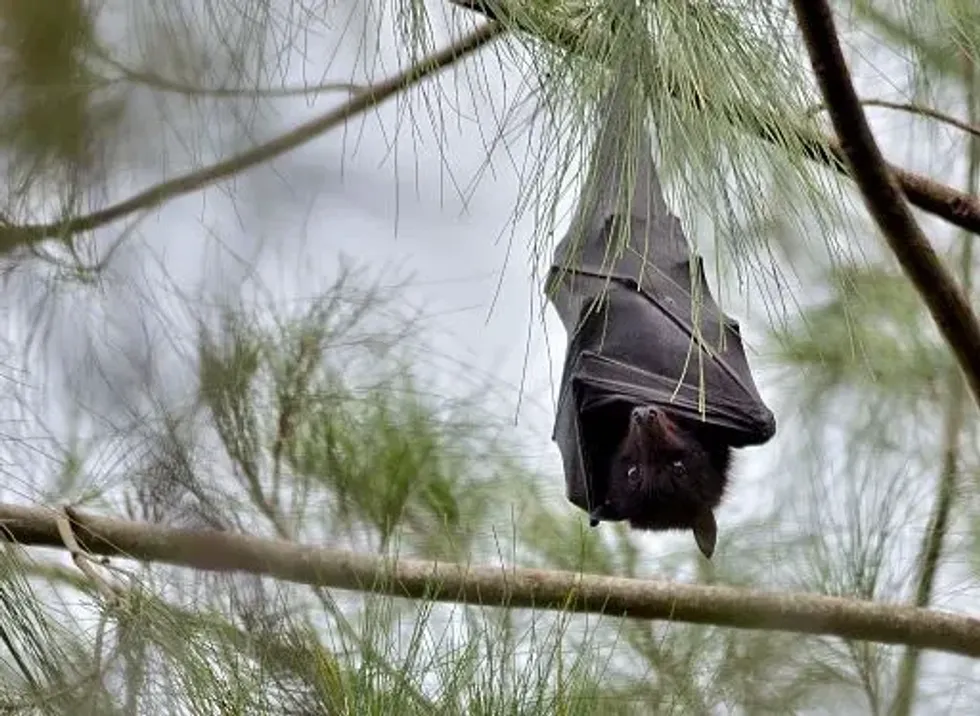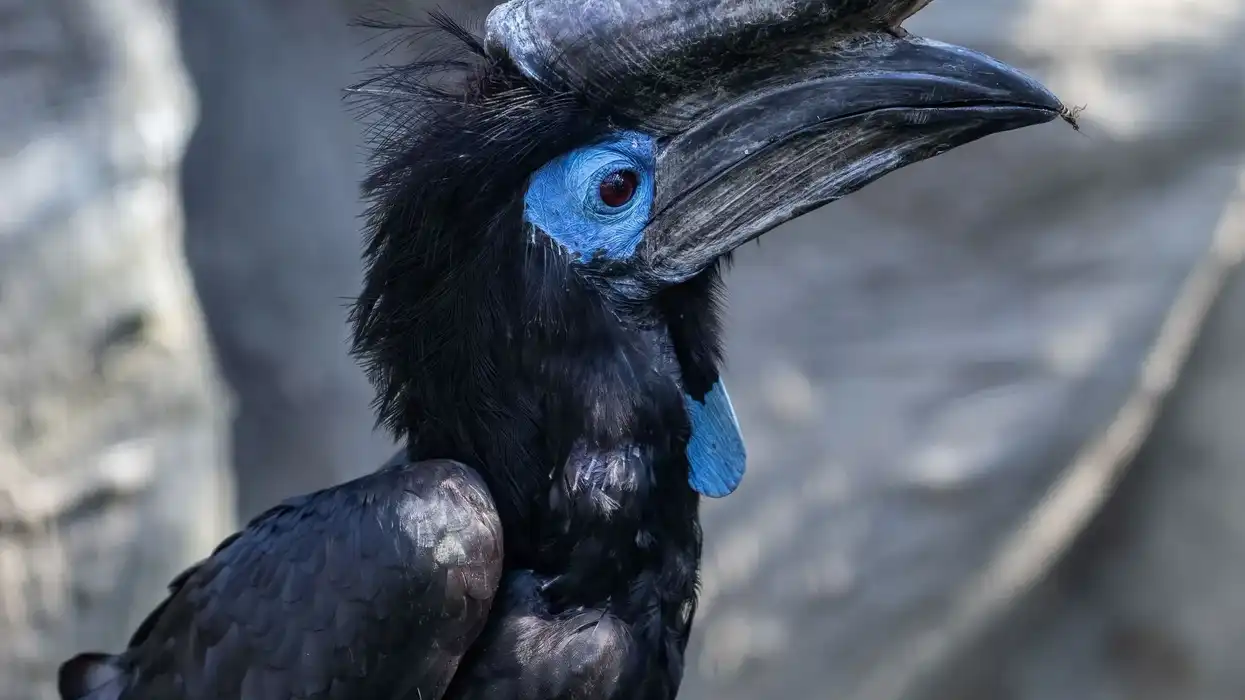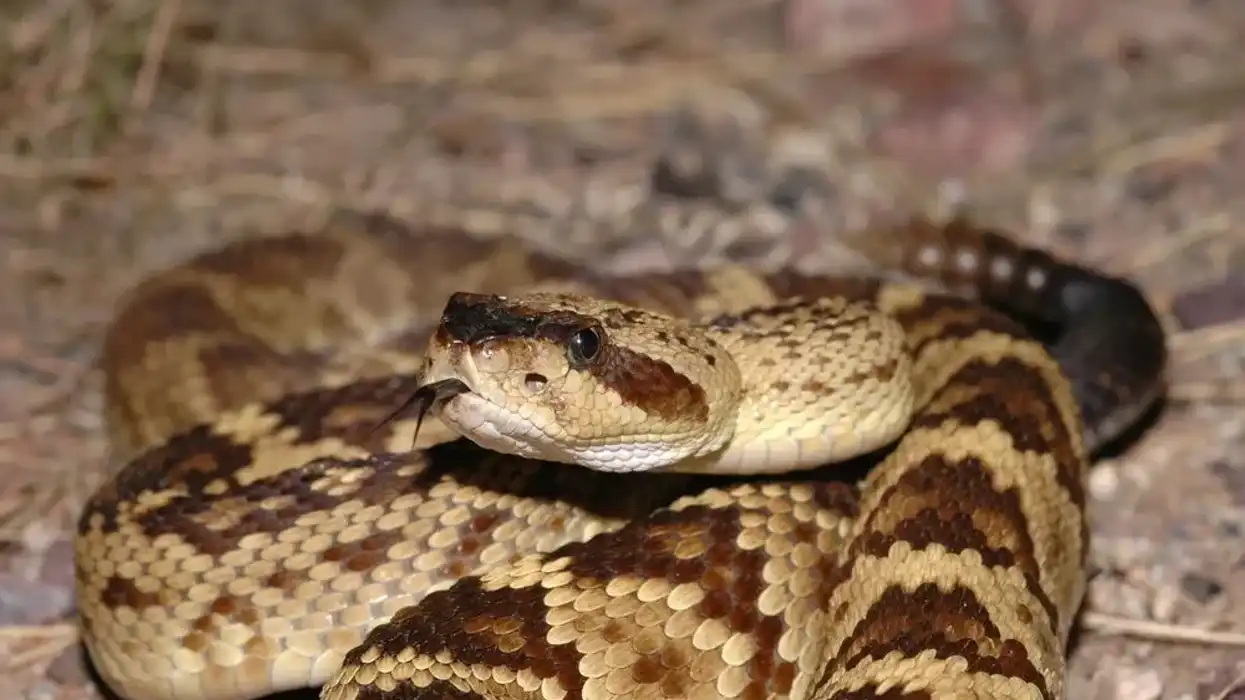The black flying fox (Pteropus alecto) is one of the largest species in Chiroptera order, and these mammals are the largest bat found in Australia. Flying foxes are known for their long wingspan, which is more than a meter.
These animals are vital for the Australian ecosystem as they pollinate most of the native trees which support the entire nation. As these bats live in a warm climate, they prefer trees that are near to the water bodies which allows them to cool off.
Black flying foxes mostly share their habitat with the gray-headed flying foxes. These creatures become a major pest in their range when the food is scarce and will raid commercial fruits and orchards causing an enormous loss to the Australian fruit industry of about AUS$ 20 million.
This has obviously placed them at odds with the commercial fruit industry and has caused some repercussions and retaliation.
If you liked these true facts about the black flying fox, then you'll surely like these facts about the hoary bat and the gray fox too!
Black Flying Fox Interesting Facts
What type of animal is a black flying fox?
Black flying foxes (Pteropus alecto) are nocturnal in nature and during the day they roost in colonies called 'camp'.
Black flying fruit male bats travel more when compared to the female, but the female will travel a longer distance in their tropical rainforest domain for the search of food.
Though being the largest species in size and having a fearful reputation these bats are actually harmless creatures that are herbivores and their diet mainly consists of pollen, fruit, and nectar from flowers and they use their youngest to search for food.
What class of animal does a black flying fox belong to?
The black flying fox (Pteropus alecto) belongs to the mammal class of animals. The presence of the mammary glands to feed their young ones, with three ear bones, fur or hair, and the neocortex (region of the brain) are what qualify black flying foxes as mammals. Flying foxes are considered bats, also known as mega-bats or fruit bats.
How many black flying foxes are there in the world?
Unfortunately, there is no accurate count on the population of black flying foxes. As these migratory species live together with many other species of bats, it is impossible to know the exact population.
Where does a black flying fox live?
Black flying foxes are natives of northern Queensland Australia to southern Papua New Guinea and Torres Strait Islands, they are found in the tropical and subtropical latitudes of the coastal regions. These species of flying foxes are found in the eucalyptus open forests, rainforest, paperbark swamps, savanna woodland, and mangroves.
What is a black flying fox's habitat?
The roosting place of black flying foxes primarily consists of rainforests, bamboo, mangroves, overhangs, and caves.
These animals are seen roosting on the dense bamboo trees above the ground 3.2 ft (1 m) apart from each other as they roost with many other fellow mates such as the gray-headed flying foxes of their colonies. Their camp is also found in the rainforest which is dominated by the Melaleuca trees and the paperbark swamps.
Females rarely leave their camp as their pups are always clinging to them till they are able to fly.
Who do black flying foxes live with?
Black flying foxes are social creatures, they live together in a group known as colonies and their roosting site is called a camp which contains hundreds to several thousand individual bats.
How long does a black flying fox live?
A black flying fox (Pteropus alecto) can live up to 25 years in the wild, but those who are kept in captivity live a shorter life as they need to be free to fly around and adapt to a proper roosting habitat.
How do they reproduce?
Black flying foxes are polygynous in nature and will mate with several females during the breeding season, they reach their sexual maturity at the age of two years old and females are ready to breed at three years of age. During the breeding season, males will define their own territory on a tree branch.
Their breeding season starts in the month of August during the spring season and their gestation period is 140 - 190 days, resulting in the birth of a live single pup.
The young pup will be taken care of and protected by their mothers till they reach their adult sizes, females will feed the young pup. Females of these species grow faster than males.
What is their conservation status?
Black flying foxes are listed as a species of Least Concern on the IUCN Red List. But still, these animals are exposed to several threats that include the destruction of their natural habitat by humans, and extreme climate changes.
The black-bearded flying fox from the same family of Pteropdidae is listed as an Endangered species on the IUCN Red List due to the rapid loss in their natural habitats.
Black Flying Fox Fun Facts
What do black flying foxes look like?
The black flying fruit fox (Pteropus alecto) has a black head and full black body with lighter hairs. It has a reddish-brown collar and vague red-brown eye rings, which makes them look like they are wearing glasses.
These species do not have hairs on their lower legs. Gray-headed flying foxes are similar in appearance with gray body fur color instead of black.
How cute are they?
Bats are always misunderstood because of the myths and scary stories which do not match these funky flying creatures' cuteness. Their furry and unique appearance makes them exquisite to look at. They have an important role in pollination and catching bugs during the night in the worldwide ecosystem.
How do they communicate?
Black flying fox uses vocalization, visual signals, scent information, and palpable communication. These species use a variety of calls to communicate with each other, they make mast noises during dusk and dawn as they are flying out for the search of food at night and when they are returning during the day to their camps to sleep.
How big is a black flying fox?
Black flying foxes are considered the largest species of bats found in northern Queensland Australia, these larger-sized bats can grow up to 6-7.5 in (153-191 mm) in height and more than 39 in (1 m) in wingspan. They are smaller than the Ryukyu flying fox.
How fast can a black flying fox fly?
Black flying-foxes can fly at a speed of 21.7-24.8 mph (35-40 kph), and they can travel over 31 mi (50 km) from their roosting site to a feeding area. The fastest bat is considered to be the Mexican free-tailed bat.
How much does a black flying fox weigh?
Black flying foxes are large-size flying mammals, males are slightly larger than females. A fully grown adult black flying fox can weigh between 17.6-35.2 oz (500-1000 g). They are more than 50 times heavier than a red bat.
What are the male and female names of the species?
At present, no particular name has been assigned to each sex of the black flying fox bat species.
What would you call a baby black flying fox?
A baby black flying fox is called a pup.
The newborn bat during the first four weeks after its birth will totally depend on its mother for food and protection. Young bats learn to fly within two to three months and till that time they will cling to the hairs and nipples of their mother to move around.
What do they eat?
Black flying foxes are species of bats that can prosper in a wide range of environmental conditions and use different resources to survive. Their primary diet consists of pollen, fruit, and nectar from flowers of the rainforest trees.
During the summer season, these species will survive in the open forests of Eucalyptus which are native to Australia, and during the winter season, they will forage in the open forests of Melaleuca commonly known as tea trees, and during the spring season, they forage in the rainforest.
Are they dangerous?
Yes, black flying foxes in their native rainforest regions are dangerous to humans as they carry highly infectious diseases such as Lyssa and Hendra viruses and a bite or scratch can be extremely lethal and you might end up dying.
Would they make a good pet?
No, you cannot keep a black flying fox as a pet, it is illegal in many countries including Australia to keep black flying foxes as pets. These species of flying fox bats are born free and might need help to survive in a cage, they need the freedom to seek and hunt for food and socialize with other species.
Did you know...
The gray-headed flying fox is one of the animals that share the same habitat as the black flying foxes.
These nocturnal animals assess their nearby environment by echolocation, producing sounds, which returns back to them if it bounces any objects. The closer the object is, it bounces back quicker making them able to fly during the night.
The black-eared flying fox is one of the species that are active during the day. These animals have been seen flying in a large group during the daytime.
Gray-headed flying foxes are the only species of bats that have fur right down their legs and toes. Their population has drastically declined to a few thousand from a million.
Why are black flying fruit bats also called black flying fox?
Black flying fruit bats came to be known as the black flying fox because of the large size, fox-like animal appearance, small ears, large eyes, and brown-colored fur on the neck.
What threats do black flying foxes face?
Though this species of flying foxes are listed as Least Concern on the IUCN Red List, these species are exposed to several threats that include loss of habitat by clearing or modifying the native vegetation and mass dwindle caused by the extreme temperature.
Other factors that are major concerns for these black flying foxes are the injuries caused by getting entangled into barbed wire fences and poorly constructed fruit tree nettings.
Here at Kidadl, we have carefully created lots of interesting family-friendly animal facts for everyone to discover! For more relatable content, check out these spectral bat facts and giant golden-crowned flying foxes facts pages.
You can even occupy yourself at home by coloring in one of our free printable black flying fox coloring pages.










